Open heating system or closed: choose the best option
In this article we will talk about the difference between a closed and open heating system and what it is advisable to choose for use in a country house. But, before making the right decision, let us consider what constitutes an open-circuit heating system and what are its features and disadvantages.
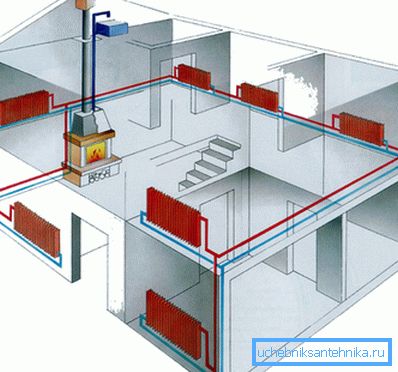
General information
- The scheme of an open heating system is based on the laws of thermodynamics.. Leaving the boiler in the pipeline, the coolant creates an area of high pressure. At the same time, further along the pipeline, a region of reduced pressure is located, where the coolant rushes.
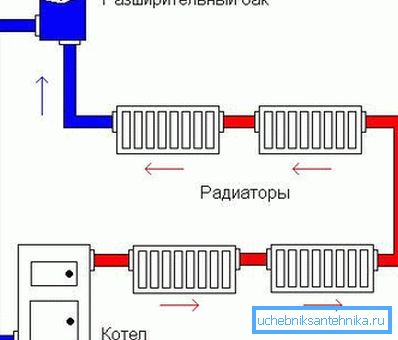
When passing through the pipeline, the heated water gradually releases heat and cooling returns to be heated again. (See also the article Single-pipe heating system: features.)
Important: In this case, as antifreeze, only water can be used. The use of antifreeze will contribute to accelerated evaporation of the coolant.
Today, such a scheme is reasonably considered the most simple, since it works on the principle of the natural circulation of the coolant. At the same time, such a system is less energy-independent in comparison with the closed analogue.
- The closed circuit is completely sealed, and therefore the contents of the pipeline and radiator do not evaporate.. The circulation of the coolant through the pump.
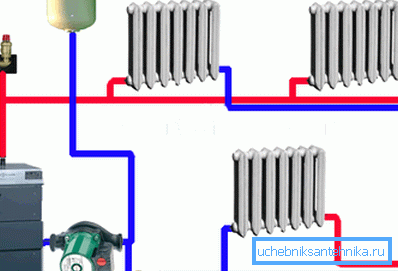
In addition to the boiler and circulating pump, the system involves the use of pipes, radiators and expansion tank.
When the temperature of the coolant rises, the valve opens in the expansion tank and the excess heated liquid is taken. If the temperature of the coolant falls, the shortage is pumped back to the system by the circulation pump.
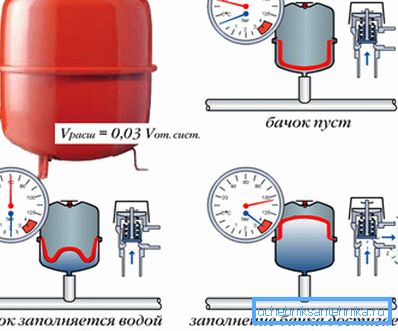
The main advantage of this scheme is the ability to maintain pressure within the initially set limits.
The main differences
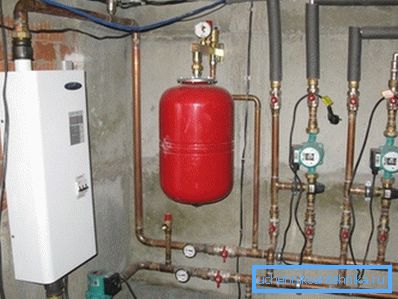
Comparing what is better open or closed heating system, consider the distinctive features of their design and operation:
- It does not matter whether the scheme is closed or open, and the expansion tank is used there and there. But in an open system, this element is located at the highest point of the circuit, and in a closed system there are no special requirements for the placement of the tank.
Important: Using modern boilers of foreign production, you can refuse to use the external expansion tank, as it is built into the equipment from the factory.
- The scheme of the closed type is completely isolated from atmospheric flows, as a result, the ingress of air into it is excluded. Due to this feature, the operational life of heating equipment is increased. Due to the additional pressure at the top of the system, the possibility of air plugs in the radiators is minimized.
- An open system is built by hand with the use of large-diameter pipes. In addition, these pipes need to be tilted to allow natural circulation. This solution complicates the installation. In the closed type system, pipes of smaller diameter are used, the price of which is lower. Again, there is no need to withstand the slope, and therefore the finished result looks more aesthetic.
- The open type system is practically silent, as the natural circulation of the coolant is used. In a closed system, an improperly located pump causes noise. Therefore, it is important to most responsibly approach the installation of the pump.
The advantages and disadvantages of an open system

Among the advantages we note the following:
- simple instruction manual and operation;
- no noise due to natural circulation;
- ensuring uniform heating of the room;
- possibility of accelerated start and stop of the system;
- work regardless of power supply, which is especially important if the supply of electricity in the country is unstable;
- reliability and long service life of equipment used in such schemes.
Among the shortcomings we note the following features:
- The possibility of air ingress into the equipment and, as a result, the formation of air plugs in radiators, which leads to a decrease in the efficiency of the system, and sometimes to its complete failure.
- The likelihood of cavitation processes as a result of air entering the equipment, which leads to damage to pipes and plumbing fittings.
- The probability of freezing water in the expansion tank.
- The need for continuous monitoring of the water level in the expansion tank to eliminate evaporation.
- Evaporation and, as a result, the inability to use antifreeze, which would not freeze.
- The bulkiness of the applied equipment with low efficiency.
Advantages and disadvantages of a closed system
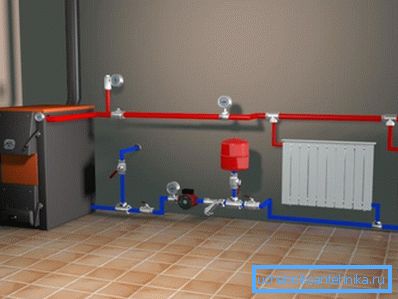
Among the advantages we note such characteristics as:
- ease of installation and subsequent operation;
- no need for continuous monitoring of the coolant level;
- the use of antifreeze without the threat of evaporation;
- no risk of freezing due to the use of antifreeze as a heat carrier;
- the ability to adjust the temperature in the room by increasing or decreasing the coolant content in the system;
- no need to regulate pressure in the system;
- profitability and manufacturability of equipment in combination with a long service life.
Among the disadvantages of a closed system, we note the following points:
- the dependence of the equipment on the availability of electricity, as the pump requires electricity;
- when operating the system in the country, you may need to purchase a generator, the price of which is high;
- if the tightness of the connection of pipes and equipment will be broken, the ingress of air with all undesirable consequences is not excluded;
- the use of large expansion membrane tanks, which complicates installation.
Application systems
Despite the fact that the open and closed heating system performs its main function, they do it in different ways. Therefore, we will try to determine which option and where it is advisable to apply.
It would seem that an open system is a time-tested option, which is all the more easy to implement in a country house.
And this is true, but only if the house is used for permanent residence.
- If such heating is built in the country, which is used only on weekends, this solution is fraught with freezing of the coolant and deformation of the pipes. Solving a problem can be done by draining water, but it is tiring to do it with each departure from the dacha.
- The system of the closed type is more suitable for devices in country houses, which are used for the purpose from time to time, as the pipes and radiators are not filled with water, but antifreeze.
- Again, it is better to choose an open type scheme for houses with a loft or for a two-story cottage. In this case, it is possible to arrange the boiler and the expansion tank with a large difference in height and thus ensure a good circulation of water.
- A closed system is less demanding on the level of equipment, and therefore suitable for use in single-storey houses without a specially equipped attic.
Conclusion
Now that we have a general idea of what constitutes a closed and open heating system with forced circulation, we can choose the appropriate option.
Are there any questions that need clarification? More useful information can be found by watching the video in this article.